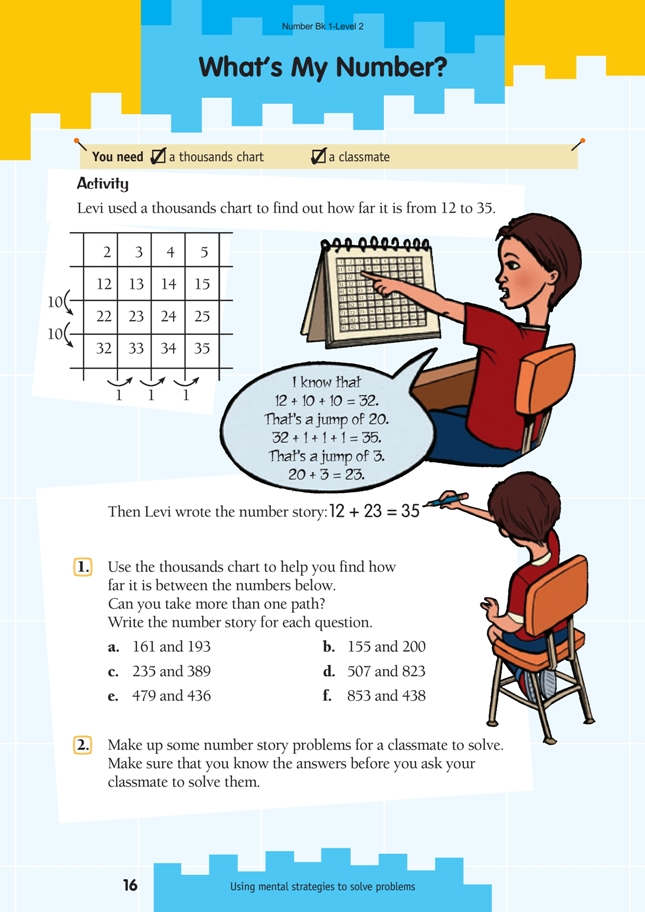This is a level 2 number activity from the Figure It Out series.
A PDF of the student activity is included.
Click on the image to enlarge it. Click again to close. Download PDF (253 KB)
use mental strategies to solve problems involving 3 digit numbers
FIO, Level 2, Number, Book 1, What's my Number? page 16
classmate
A sound knowledge of number relationships can help the students to develop strategies for problem solving. In the case of the thousands chart, the students need to understand that numbers are related by ones when they move horizontally and by tens when they move vertically. For some students, a mental image of numbers as they are arranged on a thousands chart will be helpful for solving addition and subtraction problems.
Before tackling the missing-addend problems presented in this activity, the students should have had experience of using the thousands chart to solve addition and subtraction problems where the result is unknown. For example, to solve 64 + 23, they might begin at 64, add 10 (74), add another 10 (84), then add 1 (85), add another 1 (86), and add another 1 (87). The missing addend – or change unknown – type of problem using the thousands chart means that the students need to keep
track of how much they have added or subtracted. They also need to keep an eye on their destination number and take the “jumps” needed to arrive exactly on that number.
When the students are able to confidently solve the sorts of problems presented here with the thousands chart, which has every number represented, the same problems can be posed using a thousands book, which has only a selection of numbers on each page. The empty squares in the thousands book force the students to visualise which numbers belong in which squares, removing some of the support offered by the thousands chart (Material Master 4-7).
Answers to Activity
Answers will vary.
1. a. 32 (161 + 32 = 193)
b. 45 (155 + 45 = 200)
c. 154 (235 + 154 = 389)
d. 316 (507 + 316 = 823)
e. 43 (479 – 43 = 436)
f. 415 (853 – 415 = 438)
2. Answers will vary.
